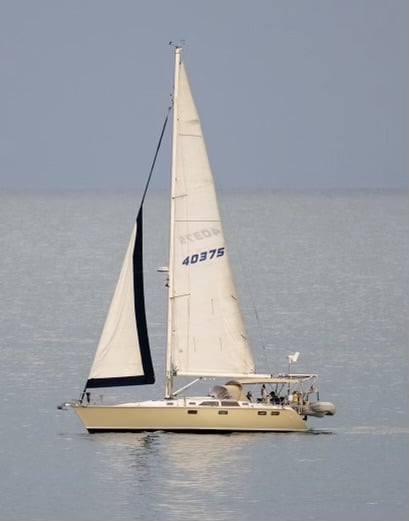I mean, physically, when going upwind with little to no wind, does it worth it turning on the engine and keep the sails close hauled? Does the foward advantage the sails give you compensate the drag, or is it better to just drop the sails all together? What would be faster, or what would use less fuel? Can somebody mathematically demonstrate it?
A kind of fascinating semi-related question that seems simple but the answer is unintuitive.
https://www.wired.com/story/faster/
Blackbird has pushed itself past the wind. On the far side of the mythical barrier, things get weird. Cavallaro feels wind blowing in his face – yet the wind is also propelling him forward at… Cavallaro glances at the GPS-enabled speedometer mounted in the cockpit. The numbers tick up faster than he can report them. “Twenty, no, 22!” He’s shouting into the transceiver: “30!” Running out of lake bed, Cavallaro hits the brakes.
Ocean and Puget Sound sailor here. The answer is: it categorically depends. If motoring into the wind in irons (in line with the wind), douse the sails. You’re not getting any thrust when in irons. You could damage something or put in undue wear and tear.
But if you’re asking about tacking, using the engine can drastically improve the point of sail. And if you’re rigged to close haul, e.g. big genoa + Barber hauler, you can get very close to the wind.
With regards to your “little or no wind” context, as long as the sails aren’t luffing, you’re gaining some thrust from the sails in this situation.
But one measurement is worth a thousand opinions. Try it out for yourself. Watch your SOG and how close to the wind you can get with the transmission in forward vs neutral. You’ll find there are sweet spots for your rig and sail configuration.

